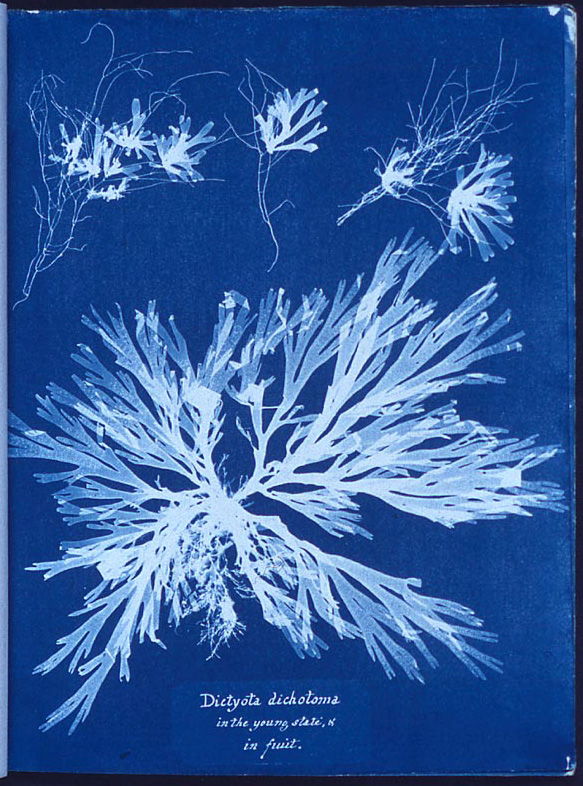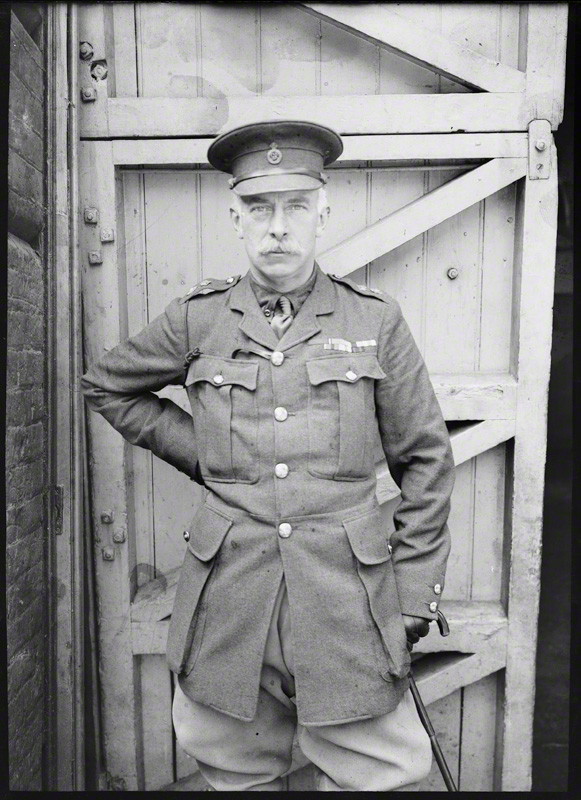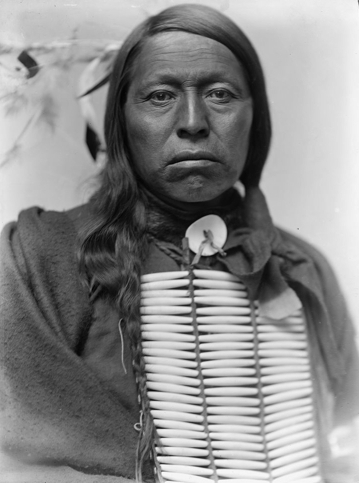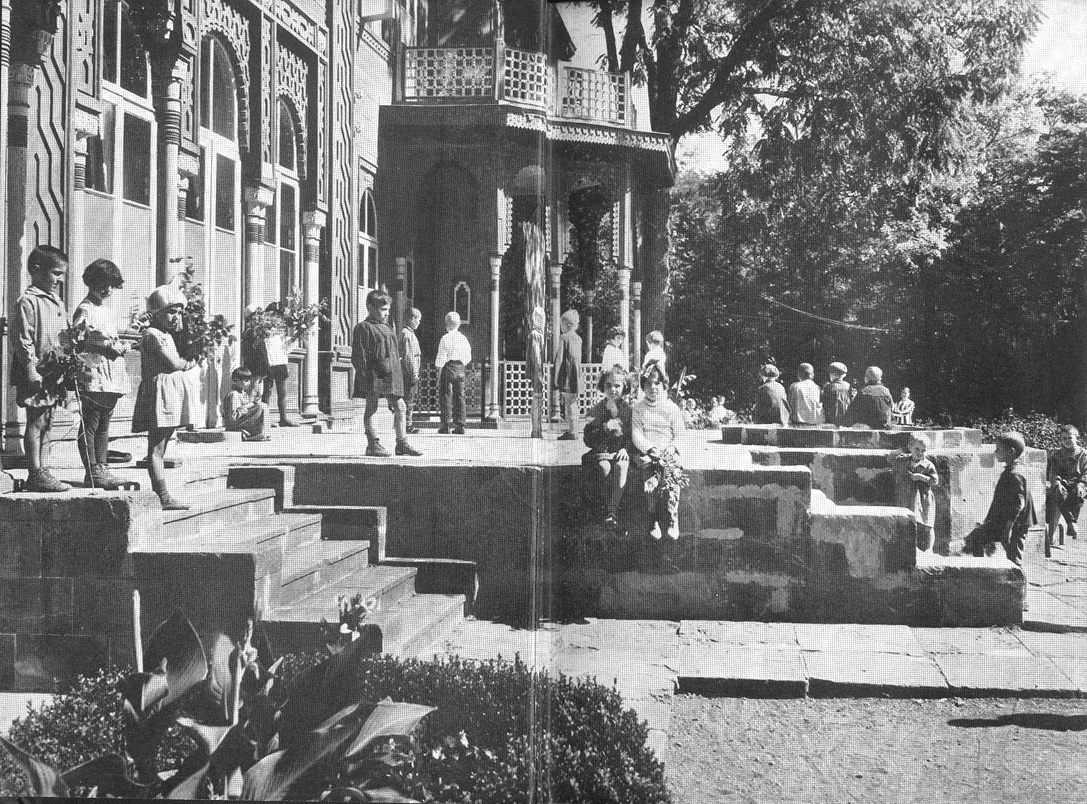26 miles across the Pacific Ocean from the tangled mess of humanity that is Los Angeles and Orange County sits an island paradise called Santa Catalina where time has stood still and visitors can experience what California was like before the Europeans sailed in. Adventures in the Nearby Far Away is a photographic diary of my many visits to the island over the years, a place I have been visiting since I was a boy, and been documenting photographically since the late 90¹s. All photos are shot on film. – Ed Templeton
Author: Pierre Bessard
Photobook of the year! proud & happy: Ed Templeton « Adventures in the Nearby Far Away » presented as an accordion-fold continuous book which spans 27 feet once extended. Housed in a clamshell box. Edition of 1000 copies.
Ed Templeton (né en 1972) est un skateboarder professionnel californien de renommée internationale qui a fondé sa propre compagnie de skateboard nommée Toy Machine. Il est aussi un artiste connu pour ses peintures, ses portraits et des photographies de scènes de rue. Il a publié plusieurs livres sur la jeunesse ou qui documentent sa vie quotidienne et ses déplacements dans des publications telles que Teenage Kissers, Teenage Smokers, The Seconds Pass, Deformer, et bien plus encore… Ce nouveau livre est présenté dans une couverture enveloppant la moitié du livre, les pages forment un accordéon et couvrent 8,40 mètres de longueur lorsque déplié, présentant un collage impressionnant réalisé par Templeton. Les images sont imprimées en recto-verso. Édition de 1000 exemplaires.
Best Photobook 2015! proud & happy: Ed Templeton it’s last book « Adventures in the Nearby Far Away » presented as an accordion-fold continuous book which spans 27 feet once extended. Housed in a clamshell box. Edition of 1000 copies.
26 miles across the Pacific Ocean from the tangled mess of humanity that is Los Angeles and Orange County sits an island paradise called Santa Catalina where time has stood still and visitors can experience what California was like before the Europeans sailed in. Adventures in the Nearby Far Away is a photographic diary of my many visits to the island over the years, a place I have been visiting since I was a boy, and been documenting photographically since the late 90¹s. All photos are shot on film. – Ed Templeton
Tout simplement, Merry Christmas
Je vous souhaite à tous un joyeux Noël, moi c’est Chocolat Bernachon, un peu aussi de la manufacture de Alain Ducasse (mais honnêtement un peu moins savoureux que le chocolatier lyonnais Bernachon, palet d’or)
TheBeSpoke Collection, N°1 by Eric Rondepierre: “The Mark of Time” (Limited Edition 250 Copies + signed C print -a double page- )
La traduction du texte en anglais: Le cinéma est né en 1895. En 2015, son dispositif original n’est plus parmi nous, ainsi va le monde, une technique meurt, une autre apparaît : « la mort assurément est la jeunesse du monde »1. Ma recherche prend place dans un moment de transition puisque je commence mon travail sur le cinéma en 1990 et que je commence à le montrer en 1992. C’est en 1993, à Washington (USA), que j’initie une série de photographies montrant des photogrammes de film corrodées par le temps, les conditions de stockage. Deux ans après je les expose au MoMA de New-York. Depuis lors, je visionne des films dans les cinémathèques occidentales et les collections privées, prélève des images « décomposées » sans les retoucher. Je choisis celles, rares et improbables, où l’empreinte du temps dialogue avec l’image de telle façon qu’il devient parfois difficile de savoir où s’arrête l’image proprement dite et où commence le travail de sa destruction. Jean Cocteau disait que le cinéma filmait « la mort au travail ». Il m’a paru intéressant de repérer ce travail de la mort au sein même du medium, dans la couche matérielle et invisible qui nous permet d’y avoir accès : la pellicule. C’est avec une longue patience que j’ai été conduit à parcourir le cinéma en tout sens (voir un long-métrage image par image prend 15 jours à raison de 8h/Jour), à réfléchir sur la précarité des archives de film, leur support, leur conditions d’apparition, et de disparition (j’étais loin de penser que la pellicule elle-même disparaitrait !). Que des figures et des lieux filmés depuis un siècle puissent refaire surface sous un autre visage et en d’autres temps n’est pas fait pour me déplaire. Que j’ai pu fixer leur rencontre hasardeuse avec les maladies qui affectent leur support me satisfait pleinement. Que ces images aient une beauté, une étrangeté et une force est de surcroit : la grâce tombe où elle veut.
N°1 BeSpoke Collection with Eric Rondepierre: “The Mark of Time” (Limited Edition 250 Copies + signed C print -the picture attached- )
Cinema was born in 1895. In 2015, the original device has disappeared – such is the world, a technique vanishes and another emerges: “There is no doubt that death is the youth of the world.”* I initiated my cinematic research at a transitional moment, in 1990, and presented it in 1992. In 1993 in Washington (USA), I started a series of photographs figuring film photograms corroded by the passing of time and storage condition, which were exhibited in New York two years later at MoMA. Since then, I have been watching films from Western film libraries and private collections, harvesting “decomposed” images affected by the passing of time. Without retouching them, I select the improbable and rare ones, those in which the marks of time enter in dialogue with the image to the point where it can be difficult to distinguish the fine transition between the actual image and its destruction process. Jean Cocteau claimed that cinema filmed “death at work”. It seemed interesting to me to spot death at work at the core of the medium, in the material and invisible layer giving us access it: the film itself, the reel. With great patience, I was lead to roam though cinema (it takes fifteen days, eight hours a day, to watch a feature film image by image), to reflect upon the instability of film archives, their support, the conditions of their appearance, and disappearance (I was far from imagining that the proper reel could vanish!). The notion that figures and locations filmed a century ago can resurface differently and at other times; that I was able to fix the hazardous encounter with the ills affecting their support, is quite satisfying to me. The notion that these images carry some beauty, strangeness and vibrancy is a nice addition: grace falls on wherever.
Edition of 250 copies with an 15 x 19 cm C Print signed by the author. BeSpoke N°1 size 210mm X 280mm
to download regulations and learn more about the requirements and the Grand Prix. 2016 edition will be held at Villa Noailles, Hyères from April 21 to 25, 2016
The Top 10 Women Photographers In History, For the first time in France, the exhibition Who’s Afraid of Women Photographers? on the website theculturetrip.com
For the first time in France, the exhibition Who’s Afraid of Women Photographers? will be at the Musée de l’Orangerie in the Tuileries Gardens in Paris from mid-October 2015 until January 24, 2016. According to the curators of this exhibit, ‘The governing ideology of ‘separate spheres’ in 19th century societies upheld more than ever that the public sphere, the creative arts and matters of intellect should be reserved for men, and the domestic sphere – reproduction and affairs of the heart, reserved for women.’ In light of this exhibit, meet 10 women photographers (all of whom are featured in this exhibition) who turned this statement on its head.
Anna Atkins
Anna Atkins comes first on our list because she is largely recognized as the first woman to take a photograph. She is also recognized as the first person to produce a book that used photography rather than illustrations. Atkins’ specialty was in the scientific world of botany. Following in the footsteps of her father, Atkins took an interest in botany from a very early age. Luckily, her father recognized this interest as a good thing and he encouraged her to pursue it. Atkins and her father were friendly with a man named William Henry Fox Talbot, the inventor of the first forms of photography, and this is most likely where her interest in photography came from. Her book, Photographs of British Algae: Cyanotype Impressions, successfully gained the approval of her peers, and in doing so established photography as an acceptable medium for scientific illustration.
Lee Miller
Lee Miller is an American photographer. She began her career after she decided to give up modeling and get behind the lens of a camera herself. The famous surrealist painter, Man Ray, was one of her first teachers. After a tumultuous relationship with the artist, Miller became a war correspondent for Vogue in Europe during World War II. She is perhaps most famous for a photograph of her (taken by fellow correspondent David E. Scherman), bathing in Adolph Hitler’s bathtub in Munich, Germany in 1945. Although she is most recognized for a photograph that she didn’t take herself, Miller was the only female combat photographer in Europe during the Second World War. She was able to document the liberation of the Dachau and Buchenwald concentration camps, giving the rest of the world a glimpse into the perverse horrors that took place in these locations. After the end of World War II, Miller continued to work for Vogue for another two years, but her most memorable work was produced during her time in the field.
Dorothea Lange
Dorothea Lange is another American photographer best known for her Depression-era works. Lange studied photography at Columbia University in New York City and soon after moved to San Francisco to open a portrait studio. Lange then began her career as a documentary photographer when she started to travel around the United States with her husband at the time. With the Great Depression looming in the 1930s, Lange continued to travel across the states, documenting the hardships plaguing rural America. She is perhaps most famous for her portrait ‘Migrant Mother,’ a beautiful piece that captures what so many Americans at the time were living through. Her work now hangs in the Library of Congress in Washington D.C. During World War II, Lange was hired to take photographs of the Japanese internment camps in America. Although Lange was sometimes frustrated that her work did not inspire society to fix the injustices that she presented them with, her documentary photography has continued to shed light on what life was like for Americans in the early 20th century.
Ilse Bing
Ilse Bing was a German avant-garde and surrealist photographer. Her most memorable work was produced when she was living in Paris in the 1930s. Bing was known around Paris as the ‘Queen of the Leica’ because of the unique handheld Leica camera she used to shoot all of her photography with. Bing was included in the first modern photography exhibition at the Louvre in 1936, and she was also included in the famous exhibition Photography 1839-1937 at the Museum of Modern Art in New York City in 1937. Sadly, when Paris was taken by the Germans in 1940, Bing and her Jewish husband were both sent to internment camps in the South of France while they awaited their American Visas. Clearly changed by her experiences during the war, Bing gave up photography in the 1950s and turned her focus to writing poetry and drawing. Today, in addition to the Who’s Afraid of Women Photographers? exhibition, Bing’s works can be seen at the Art Institute of Chicago and in the Rijksmuseum in Amsterdam.
Frances Benjamin Johnston
Frances Benjamin Johnston was an American photographer born during the Civil War. In the 1880s she moved to Paris where she studied art. She then returned home to Washington D.C. where she learned photography. Johnston quickly established herself as a professional portrait photographer. Her portraiture clients included Susan B. Anthony, Mark Twain, as well as President Teddy Roosevelt and his family, among many others. Johnston is most famous for her self-portrait, depicting the ‘New Woman’ of the 1890s, with her petticoat showing, a mug of beer in her hand, and a cigarette hanging from her mouth. The photo was very empowering for its time, and it reflects Johnston’s views regarding feminism and the general liberation of women in the late 19th and early 20th centuries. At the end of her career, Johnston specialized in landscape and architectural photography, producing a very successful study of the architecture in the southern states in America.
Christina Broom
Christina Broom is considered to be Britain’s first female press photographer. Broom took up photography after her husband became unable to work; she planned to take photographs and turn them into postcards to sell. Her plans changed once Broom discovered a true passion for photography. She soon began to take photographs of soldiers that were stationed very close to her home. By 1914, as the threat of war grew nearer and nearer, Broom was an established professional, selling her images of soldiers to magazines and newspapers in Britain. During this time, and because of the success of her documentation of the British military as it prepared for war, Broom became close with the Royal family. She was then given the privilege to photograph the King and the Prince of Wales. Although it is her wartime photography that began her career, Broom’s most well-known work are her photographs of the Suffragettes. She beautifully documented the protests and demonstrations that took place in Britain in the early 20th century, and her photography was her contribution to the feminist movement.
Gertrude Käsebier
Gertrude Käsebier was an American photographer of the early 20th century. During a time when most women were comfortable in their place at home as wives and mothers, Käsebier enrolled in art school in Brooklyn, New York. She then travelled to Europe to finish her education, and after returning to the states, Käsebier became a photography assistant in a Brooklyn portrait studio. It is here that she learned how to run a studio, and where she learned many new techniques to add to her already extensive knowledge of photography. In the late 1890s, after watching the famous Buffalo Bill’s Wild West Show, Käsebier decided that she would like to photograph the Sioux Native Americans traveling with the show. Owner William ‘Buffalo Bill’ Cody, granted her request. These portraits are now housed in the Smithsonian Institute. Käsebier is also famous in the world of photography for her encouragement of other women to become more involved in the art form, at a time when most accredited photographers were men.
Claude Cahun
Claude Cahun was a French photographer who rose to fame during the 1920s for her Surrealist self-portraits. Cahun technically identified as being a-gender, and her work often questioned traditional gender roles. In her self-portraits, Cahun dressed up as a dandy, a model, and a soldier, to name a few. At the start of World War II, Cahun became involved in the politics of the time, producing propaganda against Nazi Germany. Because of this, Cahun was arrested by the Gestapo. Cahun remained in prison for one year until she was eventually liberated at the end of the war. She continued to produce photographs until her death in 1954. At a time where men dominated the Surrealist art world, Cahun was a breath of fresh air. Cahun’s work continues to inspire feminist and a-gender photographers across the globe.

Germaine Krull
German photographer Germaine Krull attended art school in Munich, and soon after opened a portrait studio there when she finished school. Krull moved to Paris in 1926, and it is there that her skills for photography really developed. She decided to pursue a career in photojournalism, and worked for the French magazine VU. Her work ranged from fashion photography, to nudes, to portraits. Krull is known to have worked very closely with artist and textile designer Sonia Delaunay. By the late 1920s, she was considered to be one of the best photographers in Paris, alongside famous artist Man Ray. Krull also published one of the first books solely made up of photographs, called Métal. The book depicts images of bridges, buildings, and other industrial objects. Métal is considered to be one of the most important photobooks in history.
Margaret Bourke-White
American photographer Margaret Bourke-White has a lot of ‘firsts’ on her resumé. She was the first female staff photographer for the magazine Fortune at the young age of 25, she was the first female photographer on staff at LIFE magazine (in addition to this, her work was featured as the magazine’s first cover!); and she was the first woman accredited by the United States Military as an official war correspondent during World War II. Bourke-White’s photos range from documenting the Great Depression in rural America, to the Soviet Union during World War II. After the war, Bourke-White continued her successful career as a photojournalist, documenting the India–Pakistan partition. Bourke-White may be most well-known for famously photographing Mahatma Gandhi just hours before he was tragically assassinated.
Who’s Afraid of Women Photographers? 1839-1919 is at the Musée de l’Orangerie from 14 October 2016 to 24 January 2016.
Musée de l’Orangerie, Tuileries Gardens, 75001, Paris, France +33 1 44 77 80 07
Open 9AM – 6PM, closed Tuesdays.
By Molli McConnell
Molli McConnell is a writer and photographer living in Paris, France. You can see more of her work on her blog here.
La comtesse de Castiglione, beauté insolente et photographe secrète de sa vie (1837-1899) on the website de France Culture par Perrine Kervran
Celle que l’on surnommait La Castiglione et que l’on connaît pour avoir été l’une des maitresses de Napoléon III, a surtout été en secret une artiste qui a peut-être inventé la performance et l’autofiction photographique.
Par Perrine Kervran. réalisation : Lionel Quantin. Attachée de production : Claire Poinsignon. Avec la collaboration d’Annelise Signoret.
Pour commencer il faut remercier Robert de Montesquiou : sa fascination d’esthète et son fétichisme l’ont fait racheter les objets et les centaines de photographies que la Comtesse de Castiglione gardait chez elle, dans son dernier appartement qui n’était qu’un entresol un peu sale dont les miroirs étaient recouverts de tissus noirs…
Ces photos étranges sont devenues aujourd’hui des références dans l’histoire de la photographie, elles ont inspiré des performeuses et des photographes et ont été exposées au musée d’Orsay, à la galerie Beaubourg ou au métropolitain Museum…
Mais du vivant de la Comtesse, pour la plupart, ces photos étaient le secret de la Castiglione et du photographe. Et ce secret, le voilà : entre 1856 et 1895, la comtesse Virginia Oldoïni Verasis de Castiglione a posé pour plus de 450 portraits, chez le même photographe, Pierre-Louis Pierson. Cette frénésie photographique rare pour l’époque est aussi une des premières formes d’autoportrait photographique. La Comtesse apportait ses robes, ses accessoires et venait avec ses propres scénarios qu’elle imposait à Pierre- Louis Pierson et qui pendant toutes ces années s’est exécuté.
Elle posait dans la robe de tel bal ou elle avait brillé, en héroïne de théâtre ou d’opéra, en courtisane, en pochtronne, en paysanne, en meurtrière vengeresse, en marquise, en veuve, en mélancolique, en coquette devant le miroir ou même, indécence suprême, jambes nues comme les prostituées…
L’atelier photographique était devenu son terrain de jeu et la scène des désastres de sa vie. Dans cet atelier, elle immortalisa sa beauté, ses succès publics, sa disgrâce, ses provocations, sa liberté, sa solitude, ses deuils, sa nostalgie et son amertume…et à la fin de sa vie, elle y retourna pour y enregistrer méticuleusement les ravages du temps sur son corps.
La Comtesse se disait « la plus belle femme de son siècle » et ses contemporains le disaient aussi. Alors on cherche cette beauté qui nous échappe aujourd’hui dans ces photos figées et ces coiffures poudrées. Mais ce qui saute au visage, c’est l’audace et l’étrangeté de ces images.
Alors si la Castiglione a été une des favorites de Napoléon III, si à la demande de Camillo Cavour et de Victor Emmanuel, elle a œuvré par son charme à l’unité italienne, si elle a été sollicitée par Thiers afin d’user de son influence auprès de Bismarck, si elle a été cette femme libre, aux nombreux amants, puis cette femme déchue errant presque folle dans les rues parisiennes de la nouvelle république…Elle était avant tout une artiste, ayant tout de même songé jusqu’au bout à organiser une exposition de ses portraits à l’occasion des expositions universelle de 1867, puis de 1900…
Avec :
Marie Robert, conservatrice au musée d’Orsay et commissaire de l’exposition Splendeurs et misères. Images de la prostitution, 1850-1910.
HERRE THE LINK: http://www.franceculture.fr/emission-une-vie-une-oeuvre-la-comtesse-de-castiglione-beaute-insolente-et-photographe-secrete-de-sa
China can’t buy culture with museum boom, says critics On the website De Zeen Magazine
China‘s rush to build thousands of new museums is leading to cultural buildings “with no vision and mediocre collections”, according to architects and curators in the country (+ slideshow).
The programme, which has seen over 3,500 new Chinese museums built since 1978, has led to gigantic new institutions without exhibits, poor-quality buildings and structures located in the middle of nowhere.
“Projects have varied in scale, quality of construction, rigour of planning, and aesthetic finesse,” said Beatrice Leanza, art curator and the director of the annual Beijing Design Week event.
Private money is now pouring in to the sector, she said, augmenting projects initiated by central government, and regional and city councils willing to upgrade public facilities.
Major investors in the contemporary art field, from developers to banks and eventually individual billionaires turned collectors, have upped the numbers in the past four to five years,” she said, describing the new investors as “art patrons and nouveau-riches with a philanthropic itch, or simply a bit of an ego twist”.
Chinese architect Lyndon Neri, one half of Shanghai-based Neri&Hu, also believes that many of these buildings are the vanity projects of private investors.
“The desire to buy culture is quite rampant in China today,” he said. “Money can buy a lot of things but definitely not culture.”
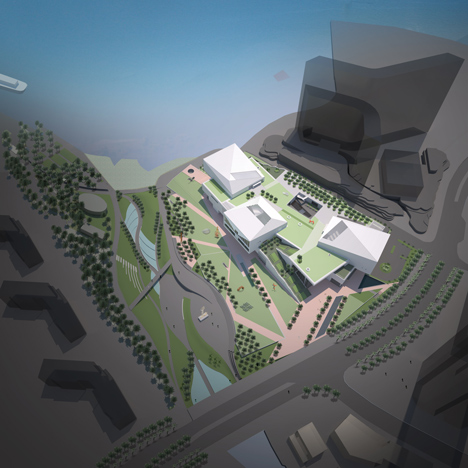 nternational architects including Kengo Kuma, Steven Holl and David Chipperfield, as well as Chinese practices, have all been enlisted to contribute to this spate of new projects.
nternational architects including Kengo Kuma, Steven Holl and David Chipperfield, as well as Chinese practices, have all been enlisted to contribute to this spate of new projects.Among the projects currently under construction are Jean Nouvel’s National Art Museum of China in Beijing, an outpost of London’s V&A museum in Shenzhen, and the M+ Museum in China’s Special Administrative Zone, Hong Kong.
Many of the museums are vast, sculptural structures that take up huge swathes of land in dense urban neighbourhoods and rural areas. However, not much thought is given to what goes inside these buildings once they are complete, according to M+ curator Aric Chen.
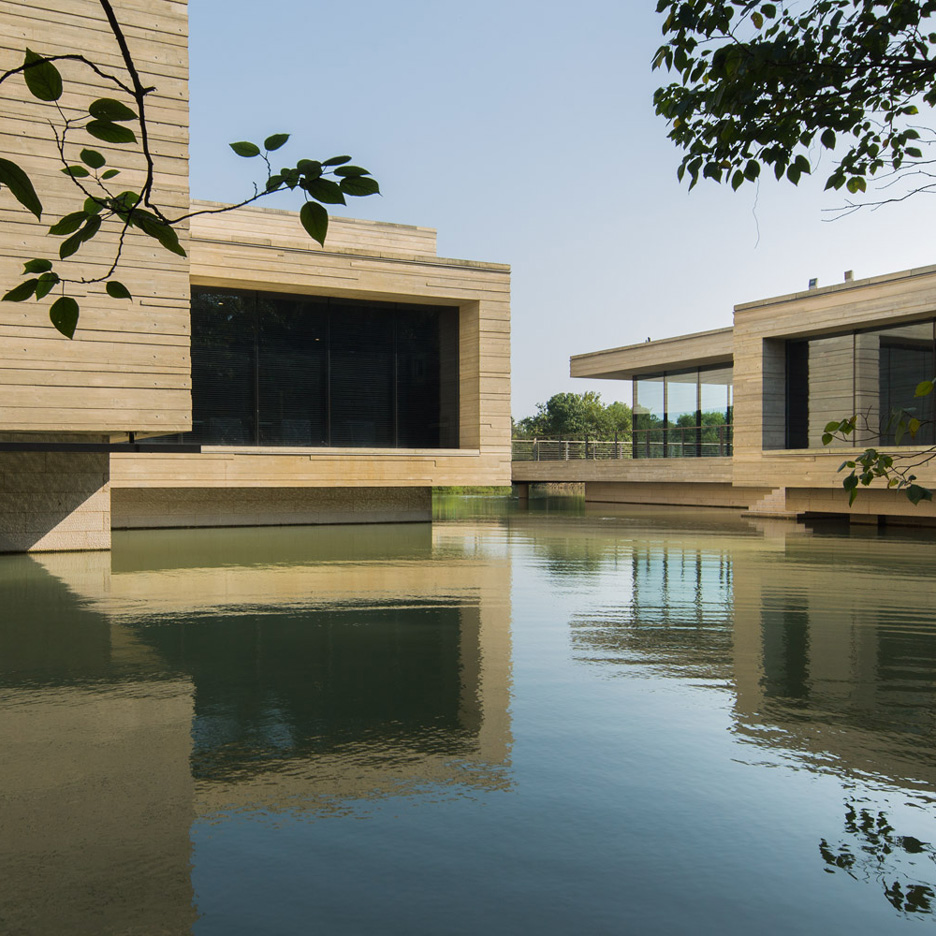
“If you haven’t noticed, China likes to do things big,” Chen told Dezeen. “It’s all about the hardware, with scant attention given to the software.”
Neri agreed, saying that wealthy proprietors think it’s enough to build a statement building to be considered cultured, so don’t feel it is necessary to think about what is presented inside.
“The rich in this country think that by building museums, they will automatically have culture,” he said. “They do not realise that building is not synonymous to content or, for that matter, culture.”
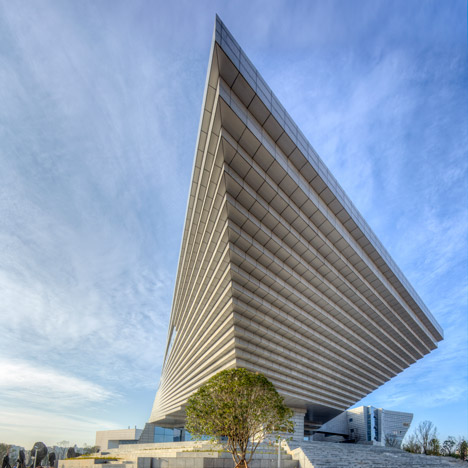
Directives that fostered the development of a cultural economy were first set up by the Chinese government in the 1980s. These fuelled investment – both public and private – into the creative industries via two consecutive five-year plans, the latter of which ended this year. The aim was for China to have 3,500 museums by 2015 – a target it achieved three years early.
“Cultural consumption is yet another way of diversifying China’s economy from its reliance on manufacturing and exports towards domestic consumption, services, tourism, and higher-value creativity,” said Chen.
The creation of more cultural buildings also ties in with the growth of China’s middle class, who are becoming increasingly interested in art and design, and a greater interest in the country’s cultural history – which the Communist Party attempted to destroy the evidence of during the Cultural Revolution in the 1960s and 1970s.

“A more affluent and educated population now has more time and interest to give to cultural pursuits,” said Chen.
“When a country becomes stronger economically, it is natural for its citizen to want to go back to its roots,” added Neri. “There will naturally be a desire to understand its own identity, culture and history.”
The construction of new museums started in the larger cities, which already had established cultural scenes and a raft of institutions. The 2008 Beijing Olympic Games and the 2010 Shanghai Expo also sparked a wider construction boom, including cultural venues.
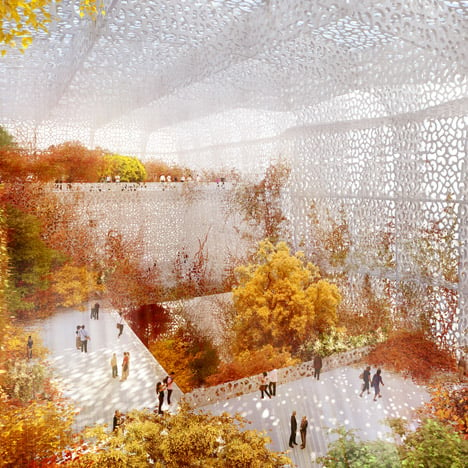
An old industrial park in Beijing was transformed into the 798 art district, with former factories and warehouses hosting galleries and studios. Elsewhere in the city, Ole Scheeren has proposed a new headquarters and museum for China’s oldest art auction house, and Nouvel’s National Museum of Art has begun construction close to the Bird’s Nest Olympic stadium.
Shanghai began heavily redeveloping its West Bund riverside as a new “creative mile” of private museums, art centres, galleries and studios for artists. The Long Museum West Bund by Atelier Deshaus and Chipperfield’s Rockbund Art Museum are both located in the area.
Provincial cities quickly followed suit, eager to cash in on the so-called Bilbao effect – enticing tourists to visit an architectural spectacle and thereby putting themselves on the map, similar to the way Frank Gehry’s Bilbao Guggenheim elevated the Basque city to international status.
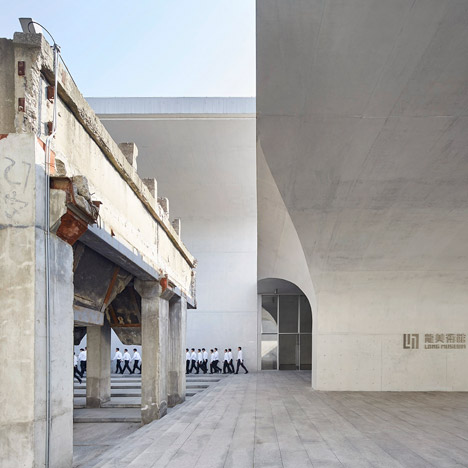
“Smaller cities of growing ambition are seeing what’s happening in the established hubs and following their lead,” said Chen. “At the same time, the national government’s directive to build up China’s cultural infrastructure and industries extends across the country. Everyone has been feeling the pressure.”
Used as a sweetener for land deals, some museums were even built in the middle of nowhere. In some cases this was a result of bad urban planning and zoning, which resulted in the surrounding projects being abandoned.
“In China, it’s often not so much about creating a museum, with well-defined content that will attract and engage the public; it’s more about using a museum as a tool for real estate development,” said Chen.
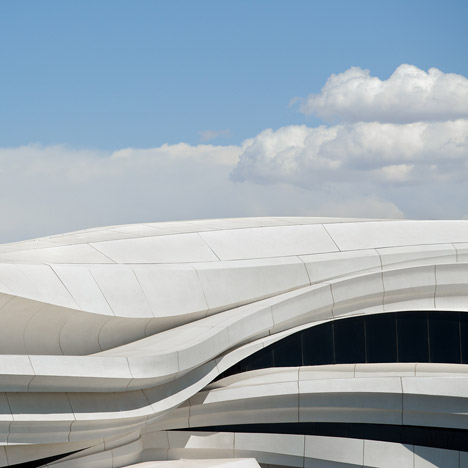
He thinks the smaller-scale projects in rural areas are much more successful, both as structures in their context and as usual resources for the public.
“I’m seeing a lot of smaller, experimentally designed museums in rural areas that are set beautifully within their natural environments, and that in many cases really do engage their local communities,” he said.
Leanza agrees: “There are plenty of other projects realised by the likes of TAO Office, Liu Jiakun, Tadao Ando, Wang Shu, among others that might sit in lesser-known areas or with less showy collections, but truly seek engagement with their locality, cultural environment and material histories.”
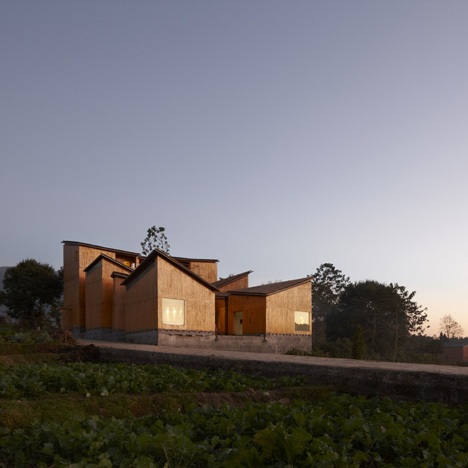
“Sadly programming and contextual or social relationship is too often overridden in designs that gulp square footage with little regard for what will be housed wherein,” she said, citing the Minsheng Art Museum in Beijing as an example.
The museum, designed by local firm Studio Pei-Zhu, is housed in a former factory and includes an angular extension covered in a shiny skin of metal panels. Its cavernous interior appeared largely empty in photographs taken when it opened in September 2015.
Neri thinks that Hong Kong is doing things better. Its M+ Museum designed by Herzog & de Meuron will sit on the waterfront of West Kowloon, appearing like a vertical slab balanced on another.
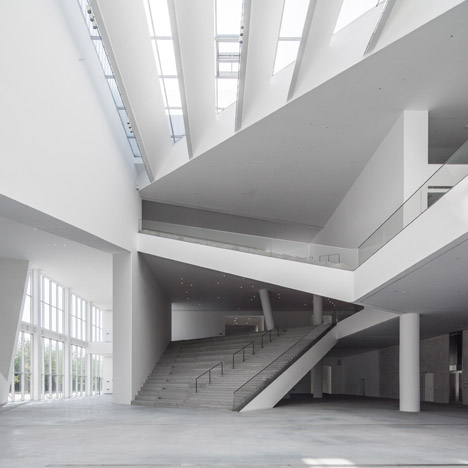
“If you look at M+ in Hong Kong, they are doing the right things,” said Neri, who believes that its combination of landmark architecture and a well-considered collection should provide a blueprint for similar projects on the mainland.
“The building is not even complete but the museum people in Hong Kong have already done all the ground work to focus on their collection and have all the programs planned,” he said.
The Long Museum West Bund by Atelier Deshaus and Chipperfield’s Rockbund Art Museum in Shanghai, and the Ordos Museum by Beijing-based MAD Architects, are other successful examples according to Neri.
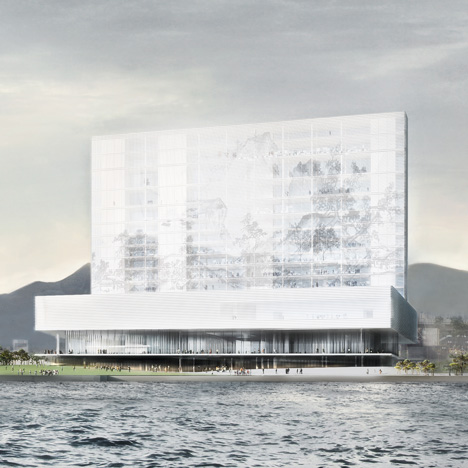
Regardless of their cultural impact, these giant projects have given international architects the opportunity to experiment while the rest of the world weathered an economic storm. But China’s economic growth is now starting to slow down, with potential implications for ambitious construction projects.
Last year China’s premier Xi Jinping also called for an end to “weird architecture” in the country. Zaha Hadid Architects director Patrick Schumacher has said that overseas firms are finding it increasingly difficult to work there.
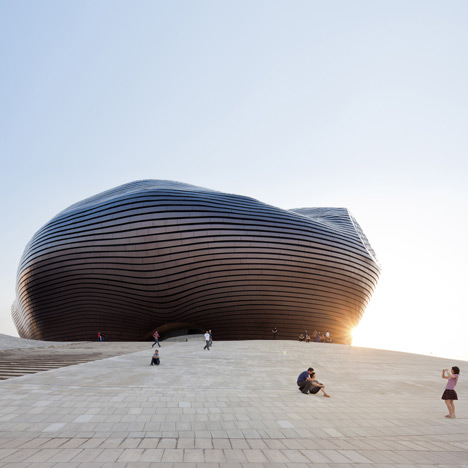
“China is still an incredible laboratory for architecture,” said Chen. “Sometimes it works, sometimes it doesn’t, but we’re guaranteed that something new will come out of it.”
“I don’t think architectural experimentation is going to go away any time soon,” he added. “Government projects may start holding back, but in the private sector, the genie is out of the bottle.”
HERE THE LINK: http://www.dezeen.com/2015/12/11/new-chinese-museums-construction-boom-opening-money-cant-buy-culture-china/
Merry Christmas! ALL I EVER WANTED, the Book by Hester Scheurwater (limited edition of 500 copies, signed)
The Self-obsessed photo series, which explores Hester Scheurwater’s desires, obsessions and fears sparked media hype in the Netherlands. The explicit imagery shocked many and fueled debate on the sexualization of society. Zurich-based curator, writer and contemporary photography specialist Walter Keller compares it to Rober Mapplethorpe’s sexually-charged imagery or Francesca Woodman’s erotic mise-en-scene.”Scheurwater’s visual self-explorations extend the boundaries of another main topic in art history and photography – the pose. But in her pictures, model and artist are one,” says Keller. “Yes, this is sexually explicit work, but even more, it is a curious and smart research about herself, where the artist looks at herself from both sides of the mirror.”
ALL I EVER WANTED, the Book by Hester Scheurwater (limited edition of 500 copies, signed)
Make a present for X mas

